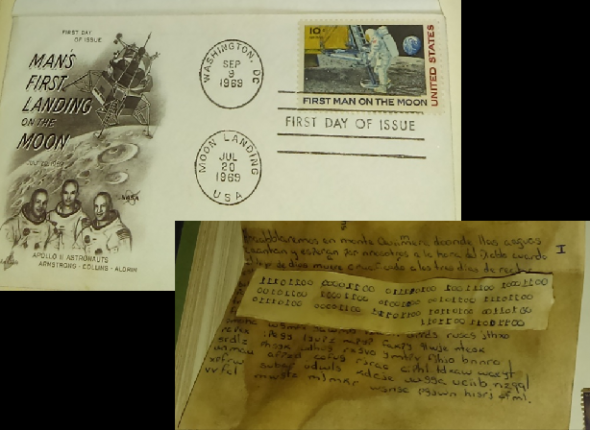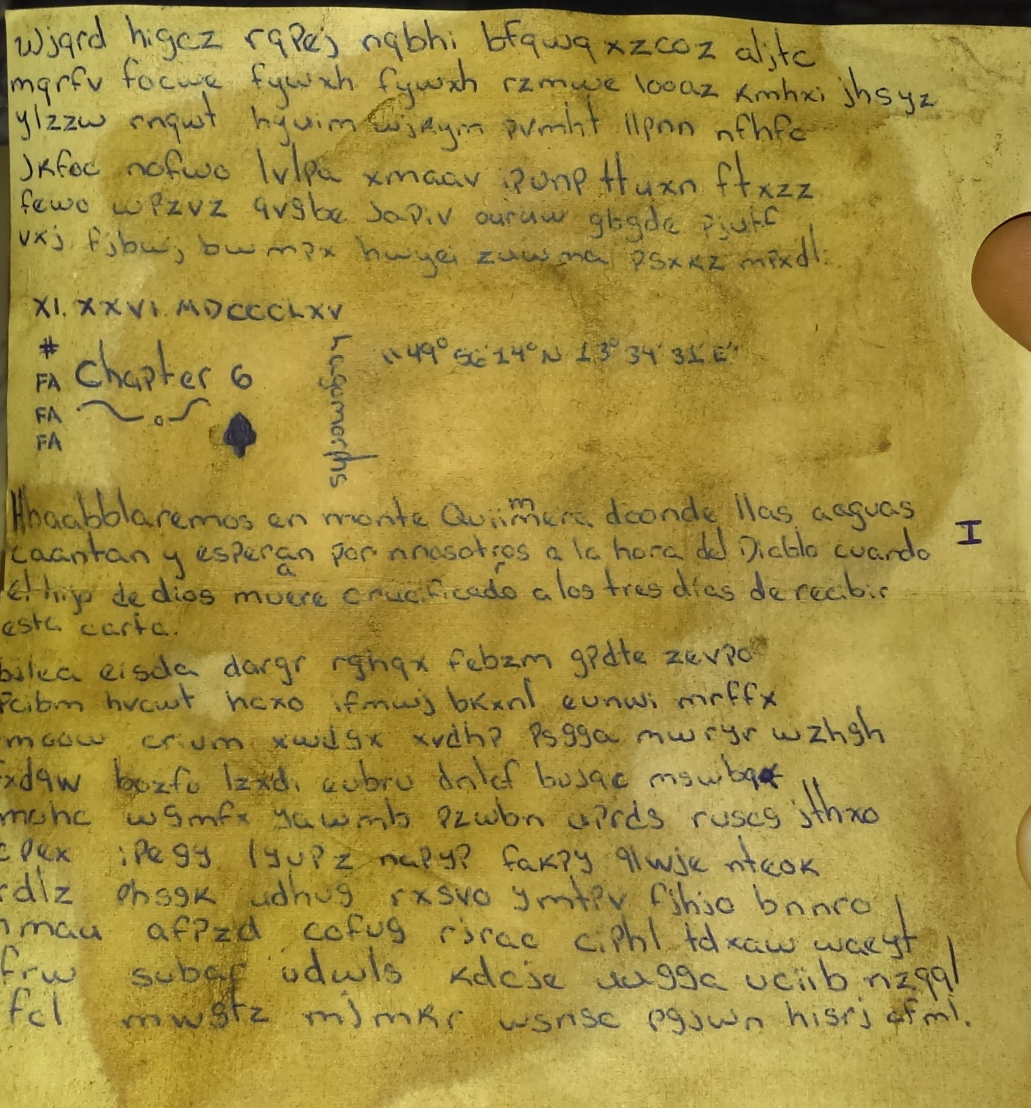An evelope found in a stamp album contains two encrypted messages. Can a reader solve them?
Here’s another interesting crypto mystery that is discussed on Reddit. This one comes from the Dominican Republic, a country I have never been to and that has never played a role in my writings. One of the few things I know about the Dominican Republic is that Falco, Austria’s most famous rock star ever, died there in a car accident in 1998.
The Reddit discussion in question was started by a user named brunodiaz07 (thanks to blog reader Gert Brantner for the hint). He wrote:
A few days ago I came across a garage sale, which is very rare in the Dominican Republic, such things are never seen. To my surprise the garage sale was full of antiques and while I was looking at the items that were for sale, I came across some postage stamp albums with a couple of envelopes. I was fascinated and bought them without thinking much. When I got home, I flipped through a couple of pages and I did not see anything interesting.
However, yesterday I decided to make a more profound observation thinking that maybe I’ll find a worthy one. Unfortunately nothing worthwhile. Then I proceeded to check the envelopes, same thing. Until I came across a commemorative envelope to the first landing on the moon. I quickly proceeded to open the envelope which had a letter with nonsense words and a strip of paper with what I assume are zeros and π’s. After hours of trying to decipher the letter I gave up and told a friend of mine about it who is an active Reddit user. He recommended me to post it here to see if anyone could find an answer.
Part 1
The encrypted letter has two parts. Here is the first one:
The middle passage is in the clear (Spanish), but with many strange letter doublings. In addition, the date November 26, 1865 is mentioned, along with the words “Chapter 5” (note that “chapter” is an English word) and “Lagomorphs”. Lagomorphs is a biological expression for hares, rabbits and pikas.
The geocoordinates 49° 56′ 14”, 13° 34′ 31” point to a place near Prague, Czekia.
Here’s a transcription of the encrypted passages a Reddit user provided:
wjqrd higcz rqpej nqbhi bfqwq xzcoz aljtc
mqrfv focwe fywxh fywxh rzmwe looaz kmhxi
ylzzw rnqwt hyvim wjkym pvmht llpnn nfhfc
jkfoc nofwo lvlpa xmaav ipvnp ttuxn ftxzz
fewo wpzvz qvgbe japiv ouruw gbgde pjutf
vxj fjbwj bwmpx hwyei zuwma psxkz mpxdl
bilea eisda dargr rghqx febzm gpdte zevpo
pcibm hvowt hcxo ifmwj bkxnl evnwi mrffx
tmcow crivm xwdgx xvdhp psgga mwryr wzhgh
fxdqw bozfu lzxdi eubru dnlcf bujqc mswbq
pmuhc wgmfx yawmb pzwbn aprds ruscg jthxo
rcpex ipegy lyupz napyp fakpy qlwje nteok
srdlz phggk udhug rxsvo ymtpv fjhjo bnnro
unmau afpzd cofug rjrac ciphl tdxaw waeyt
xpfrw subar udwls kdcje uugga uciib nzqql
vvfcl mwgfz mjmkr wsnsc pgjwn hisrj afmlThe following frequency chart was made with CrypTool 2:
The frequency distribution is much too flat for a one-to-one cipher (MASC) or a transposition cipher. So, a Vigenère cipher might be a good candidate. Note that the ciphertext contains the letter W (it is even the most frequent one), which is non-existent in the Spanish language. The letter K, which is very rare in Spanish, is the least frequent one.
Can a reader break this encryption?
Part 2
Here’s the second part of the message:
In my view, these are not sequences of zeros and π’s, but mirrored sequences of zeros and ones. Each group represents a byte. At least, this tells us that the message is not older than a few decades, as bytes were not used before the computer age (the Baudot code, which was developed in the 19th century, is also binary, but it is based on five-bit groups).






Kommentare (16)